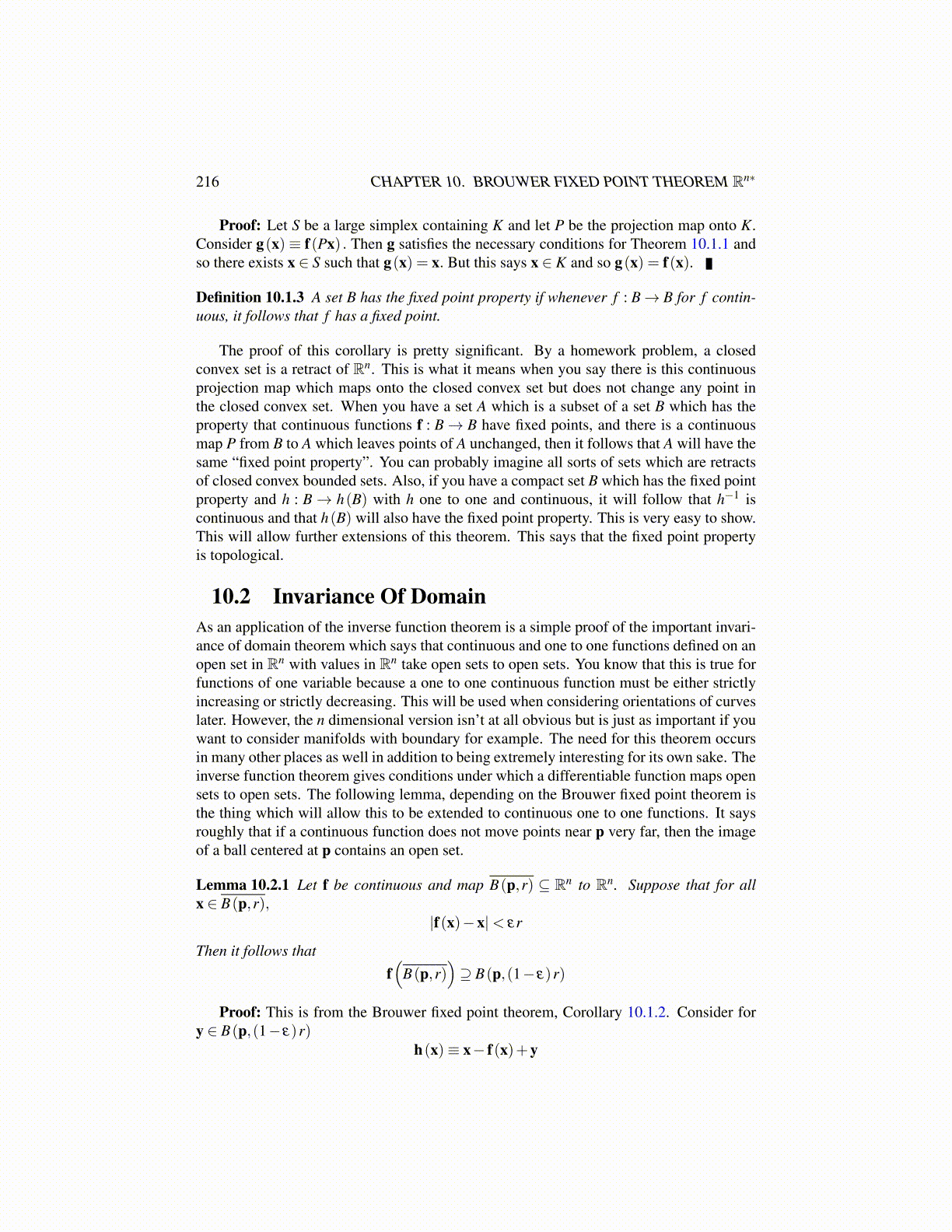
216 CHAPTER 10. BROUWER FIXED POINT THEOREM Rn∗
Proof: Let S be a large simplex containing K and let P be the projection map onto K.Consider g(x)≡ f(Px) . Then g satisfies the necessary conditions for Theorem 10.1.1 andso there exists x ∈ S such that g(x) = x. But this says x ∈ K and so g(x) = f(x).
Definition 10.1.3 A set B has the fixed point property if whenever f : B→ B for f contin-uous, it follows that f has a fixed point.
The proof of this corollary is pretty significant. By a homework problem, a closedconvex set is a retract of Rn. This is what it means when you say there is this continuousprojection map which maps onto the closed convex set but does not change any point inthe closed convex set. When you have a set A which is a subset of a set B which has theproperty that continuous functions f : B→ B have fixed points, and there is a continuousmap P from B to A which leaves points of A unchanged, then it follows that A will have thesame “fixed point property”. You can probably imagine all sorts of sets which are retractsof closed convex bounded sets. Also, if you have a compact set B which has the fixed pointproperty and h : B→ h(B) with h one to one and continuous, it will follow that h−1 iscontinuous and that h(B) will also have the fixed point property. This is very easy to show.This will allow further extensions of this theorem. This says that the fixed point propertyis topological.
10.2 Invariance Of DomainAs an application of the inverse function theorem is a simple proof of the important invari-ance of domain theorem which says that continuous and one to one functions defined on anopen set in Rn with values in Rn take open sets to open sets. You know that this is true forfunctions of one variable because a one to one continuous function must be either strictlyincreasing or strictly decreasing. This will be used when considering orientations of curveslater. However, the n dimensional version isn’t at all obvious but is just as important if youwant to consider manifolds with boundary for example. The need for this theorem occursin many other places as well in addition to being extremely interesting for its own sake. Theinverse function theorem gives conditions under which a differentiable function maps opensets to open sets. The following lemma, depending on the Brouwer fixed point theorem isthe thing which will allow this to be extended to continuous one to one functions. It saysroughly that if a continuous function does not move points near p very far, then the imageof a ball centered at p contains an open set.
Lemma 10.2.1 Let f be continuous and map B(p,r) ⊆ Rn to Rn. Suppose that for allx ∈ B(p,r),
|f(x)−x|< εr
Then it follows thatf(
B(p,r))⊇ B(p,(1− ε)r)
Proof: This is from the Brouwer fixed point theorem, Corollary 10.1.2. Consider fory ∈ B(p,(1− ε)r)
h(x)≡ x− f(x)+y